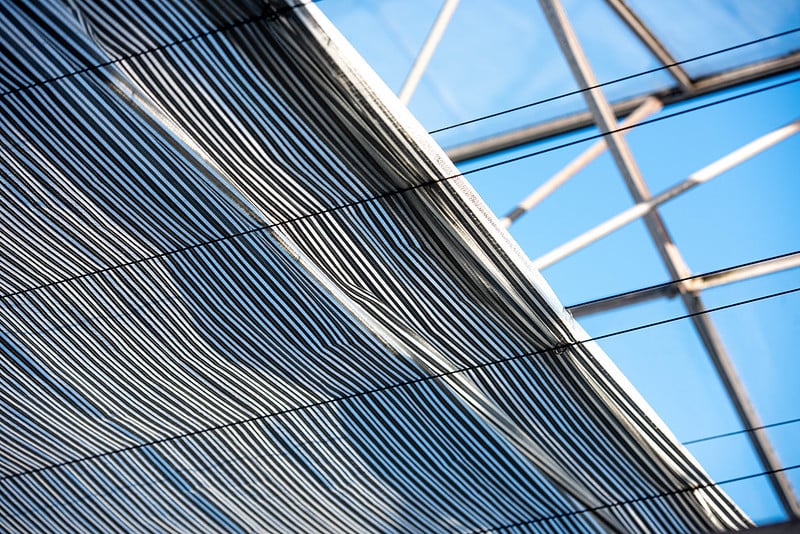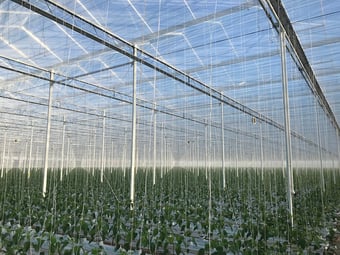Step 1: Consider external climate and crop needs
When planning to improve the consistency of the climate within your greenhouse, it is important to consider the weather at different times of the year, as well as the needs of the crop. Using light intensity as example, if the location your greenhouse is in has a high light intensity for the majority of the year, it may be necessary to implement solutions that protect the crop from sun damage.
The role of climate screens
Climate screens are an invaluable tool for maintaining a consistent climate within the greenhouse to save energy. For climate screens to be most effective, a few important pieces complete the puzzle. The first piece of the puzzle towards energy savings is to use screens. The second is to use multiple climate screens together to provide even more flexibility for maintaining a consistent climate in response to the external weather. The third puzzle piece is to use a complete solution, including vertical wall screens and closure strips to avoid gaps, rather than using horizontal screens alone. The fourth piece is to use correct installation and proper control is also important for getting the most out of your climate screen. Last but not least, keeping up with routine maintenance and replacing screens when it comes time, completes the puzzle.
The importance of climate control for greenhouse energy efficiency
Climate control for greenhouses requires an integrated approach that implements the right technology, ensures the technology is used properly by the grower and climate computer, and includes regular maintenance. If done right, this can lead to better crop yield and quality and improvements in greenhouse energy efficiency. If you want to reduce energy use while maintaining a consistent climate, climate screens are part of the answer. When implementing these types of tools, it is important to take a look at your entire operation and how different solutions are working together to form a complete solution.
A Guide to Climate Screens for greenhouse energy efficiency
Climate screens from Ridder can provide a sophisticated solution that adapts to the external environment to ensure consistent growing conditions and save energy. To learn more about how climate screens can help you save energy in your greenhouse, talk to one of our climate experts at Ridder.




